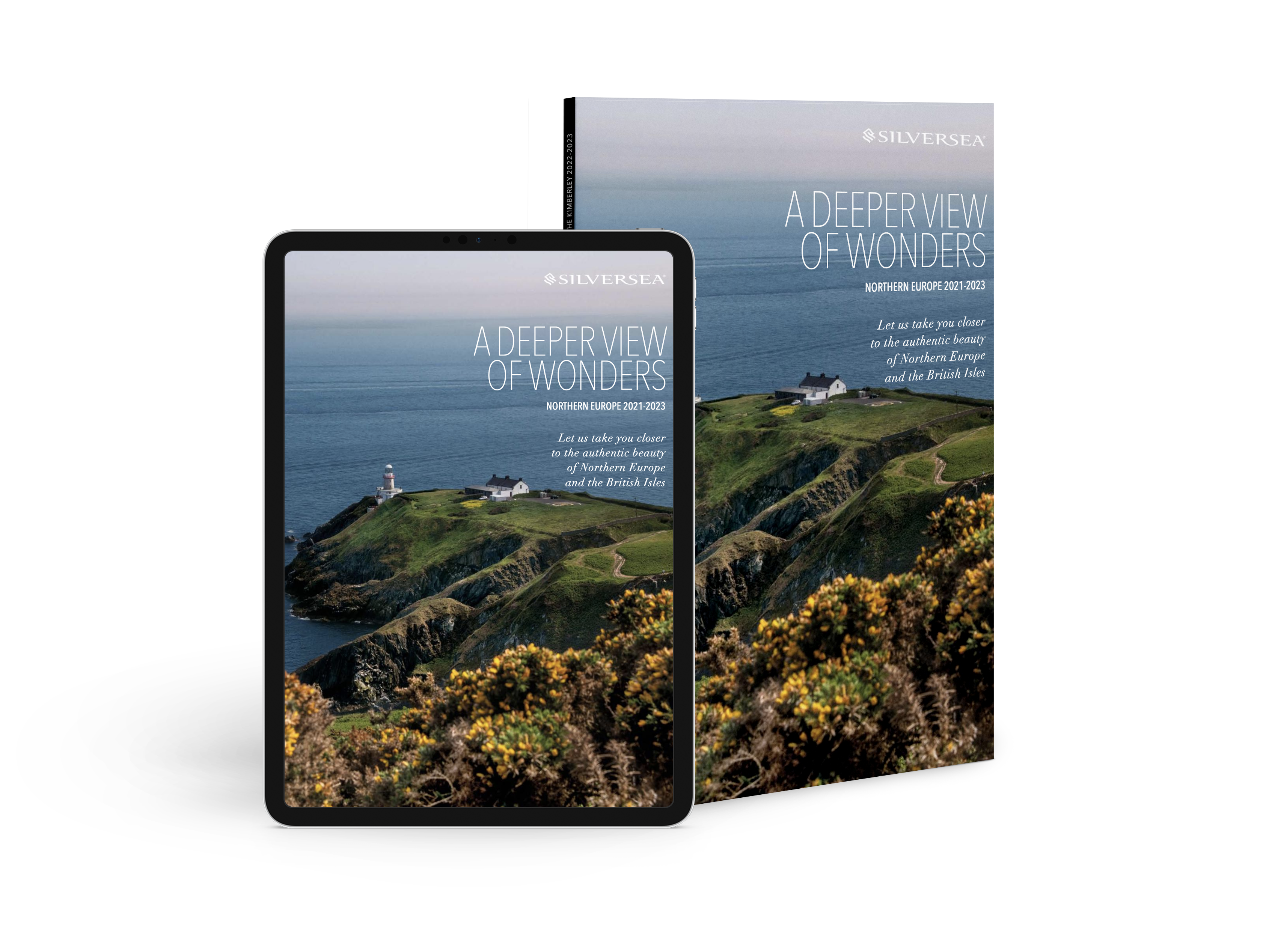Europa De Norte E Islas Británicas
Una combinación de magia, misterio y sol a medianoche
ENCUENTRE SU CRUCERO
Sueños de Europa De Norte E Islas Británicas
Viva la experiencia de viajes que son mucho más personales con Silversea. Navegando fácilmente por estrechas vías fluviales, abrazando la costa, nuestros íntimos barcos pueden acercarle más a los lugares que visite. Puede transitar el Canal de Kiel hacia el Báltico mientras que otros deben tomar el camino más largo.
Es esta flexibilidad y sentido de libertad personal que es tan atesorado por los huéspedes de Silversea.
-
-
-
-
-
-
-
-
-
-
-
-
-
-
-
-
-
-
-
-
-
-
-
-
-
-
-
-
-
-
-
-
-
-
-
-
-
-
-
-
-
-
-
-
-
-
-
-
Folleto del Europa de Norte

Solicite un folleto gratuito sobre el Europa de Norte
Viaje más allá
NUESTROS BARCOS CON DESTINO A NORTE DE EUROPA E ISLAS BRITÁNICAS
Silver Cloud
Con 20 zódiacs recién estrenadas, cuatro restaurantes superlativos y un itinerario de expedición que va de un polo a otro, Silver Cloud sabe cómo romper el hielo entre la aventura y el lujo.
- TRIPULACIÓN A BORDO212
- HUÉSPEDES254
- SUITES127
- OPCIONES GASTRÓNOMICAS4
- Dolce Vita
- Zagara Beauty Salon
- Cubierta de la Piscina
- Recepción
- Gimnasio
- Connoisseur’s Corner
- Observation lounge
- Boutique
- Explorer Lounge
- Panorama Lounge
- Zagara Beauty Spa
- Estudio de fotografía
Silver Dawn
¡Ya está aquí el Silver Dawn! Nuestro décimo barco de superlujo se unió a nuestra flota en abril de 2022 con un itinerario por todo el mundo que promete experiencias auténticas con las que podrá sumergirse por completo en el destino.
- TRIPULACIÓN A BORDO411
- HUÉSPEDES596
- SUITES298
- OPCIONES GASTRÓNOMICAS8
- S.A.L.T. Bar
- S.A.L.T. Lab
- Panorama Lounge
- Casino
- Dolce Vita
- Gimnasio
- Otium Spa
- Observation Library
- Connoisseur’s Corner
- Arts Café
- Pool Deck & Jacuzzi Area
- Boutique
- Otium Beauty Salon
- Venetian Lounge